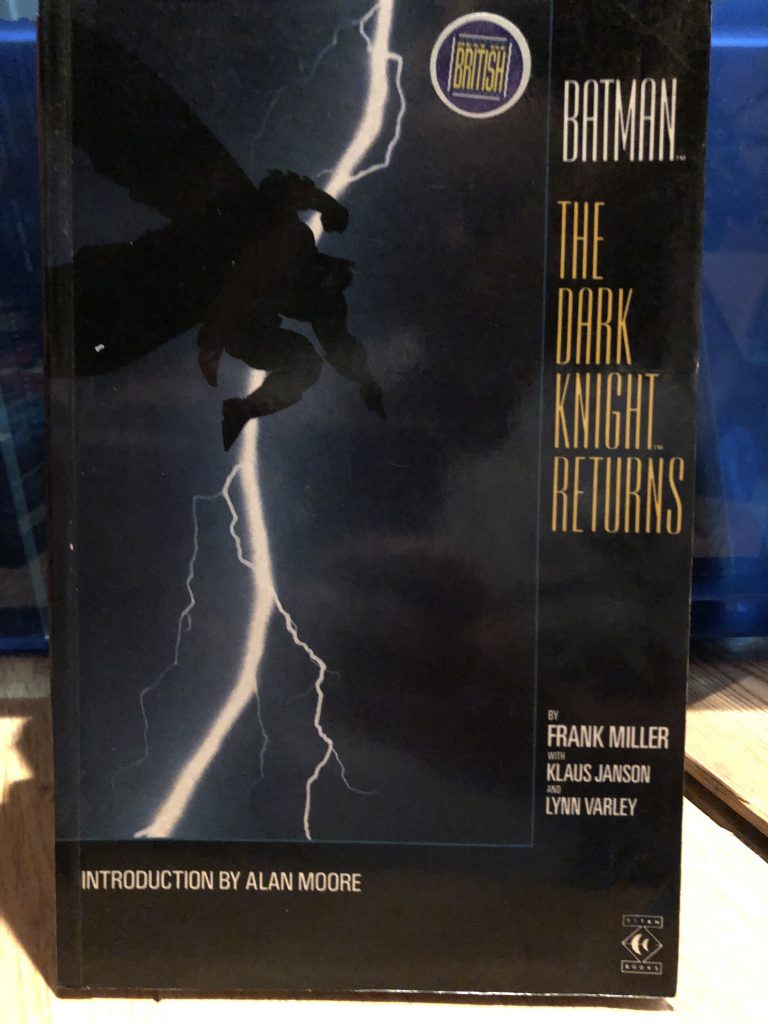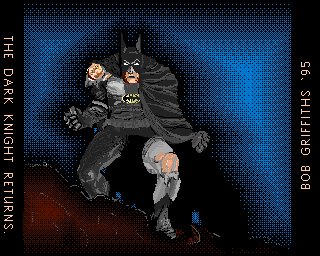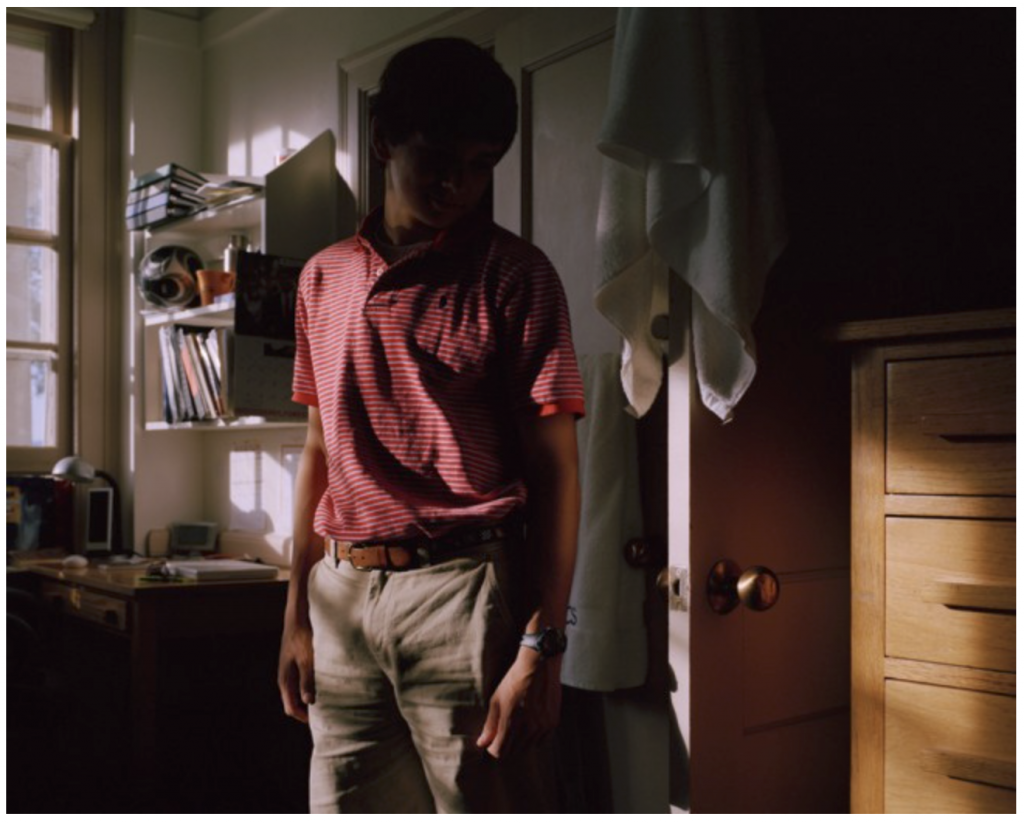Into the second floor this morning and there were a grand total of six of us sat in the class with Sylvia. Whilst she was checking the attendance it was noted that I do not appear on her register for the morning session, but I am there for the afternoon session. Are they trying to tell me something?
Sylvia explained that this morning will be a taught seminar about the Artist’s Library Assignment and then an independent task for the afternoon which would consist of visiting the Wolverhampton Art Gallery.
Next week heads up.
Next week will be individual tutorials in the morning session and we should bring along what we’re working on so far for the Practice and the Contextual modules. Sylvia said that if we hadn’t anything yet, then to bring some of last year’s results and we can work from them as a starting point. I’ve been busy shooting mainly street photography and some drone images since then with little in the way of the weaving work I was on last year, so I’ll have to think of a body of work that I can create for this year.
Contextual task: Artist’s Library
Described by the lecturer as a literature review we are to pick a text and work from it by writing a 1000 word essay and consider a few questions.
Sylvia told us the story of her childhood and how she migrated to England from Kenya when she was eight years old and was challenged by fitting in to the culture here when it was vastly different from her home. She told us that she was recommended a book, Things Fall Apart by Chinua Achebe by a teacher at sixth form and it spoke to her about the continent of her origin. She told us how it was influential to her work and practice as she did a History Of Art degree.
Questions, Questions.
Questions we are to consider when looking at our chosen text can include:
- What is the text about?
- What are the key arguments about?
- How does the text inform your practice?
- What are the limitations? In terms of your practice
We then discussed if anyone in the group had any ideas of the text they were to pick, Emma spoke of her choice of a book titled The Power Of Now by Eckhart Tolle which is a book about spiritual enlightenment. Emma described how it was useful in the previous years and how it was still inspiring her today.
I also volunteered my selection of a text, mainly to see if it was laughed out of the room. I’d got the title The Dark Knight Returns, by Frank Miller (TDKR) as my selection from the following short list.
- The Dark Knight Returns, Frank Miller 1986
- Batman: Year One, Frank Miller 1987
- Do Androids Dream Of Electric Sheep, Phillip K Dick
- TO:KY:00, Liam Wong
- Think Like A Street Photographer, Matt Stuart
I’ve read many “normal, text only” fiction books in the past but I don’t feel that I’ve ever been inspired by any of them in terms of my photography practice, whereas TDKR has given me many hours of joy over the years, with the story of Bruce Wayne/Batman coming out of retirement, battling with the government, the Joker, Catwoman, Superman, a gang, Alfred and all manner of other people all out to take advantage of the corruption and greed.

The story is a complex one that involves vigilantism, sexism, nuclear war, mass murder, mental health issues, media influence, government interference and gang warfare. The artwork is amazing and the panels of the graphic novel link up to tell the story using devices such as news broadcasts, chat shows, cctv, first person and third person views. The lighting of the images in the panels has greatly influenced me since I first read this book in 1988 and started a lifelong love of the Batman mythos. I as never much into art but this interest in the Batman mythos and world got me painting pictures on my bedroom wall when I was 15 years old and this has continued all the way through to today. I know it’s “only a comic book” but this single volume awoke my artyness and allowed me to express myself.
Last year I managed to dodge using any reference to Batman, I think, and no work was based on it. As we’ve been asked about inspirations and influences then this is at the top of my list. Sylvia asked a few questions about my selection, possibly thinking I’ve chosen a text that might not contain enough to analyse and critically review, but said that she was ok with it.

She also talked about some of last year’s level 5s (the same group I started with over two years ago) and that some had chosen texts on mental health, feminism, and even some poems about War Photography. They sounded interesting so I’ll have to see if we can find these to read, after I’ve completed my assignment.
Afternoon Task: Listening To Images
Sylvia gave us a task to go and complete and then we will discuss in next week’s Tuesday Afternoon session. But first she gave us some info to put the task into context and help us understand what it was we were being asked to do.
Sylvia showed us a slide deck about theorist Tina Campt and her Listening to images and how they can be a creative methodology to use in art practice. Campt found a lot of photos in various places and the in some of the African set there were many images of people with passport sized parts f the photos cut out seemingly by a die cutter. She found it fascinating to work out the stories of all the people in the images and suggests that you can listen to the images.
The powerpoint slide set that we were shown raised many questions for us and the list of questions that we could use to “listen” to the photograph are:
- What is the sound that precedes the image?
- What can you see?
- What can you touch?
- What can you feel?
- What can you hear?
Sylvia then showed us a photo of a young man with a shadowy face in in a room, but gave us no further information. She asked us to use the prompts above and see if we could work out the contents of the image. Beth & Cody worked together as did Emma and Ieva, along with myself and Noah to come up with a list of features we’d identified through the process.

What sound precedes the image? Argument or cross words between the man and the family or flatmates
What can we see? A young man in his student flat or home bedroom, very studious, no fun. Books all around and no posters or fun items on the shelves.
What can you touch? Although we can’t touch anything in the photo as it’s a 2D item it felt to me that I could almost feel the sun shining through the window is warm on the subjects hands, and I felt that I might be able to touch the folders on the shelf and riffle through the paper therin.
What can you feel? For me, the subject’s demeanour gave an impression of sadness and someone who needs a connection or a hug
What can you hear? For me, if I imagined myself behind the camera I could hear the birds and people outside, Noah felt he can hear the sound of the sun which was an interesting thing, and I guess it is the same as a familiar smell taking you back to a time in your childhood, when your gran used to cook cabbage or had a drink of cider.
The picture was revealed to us as part of Confessions For A Son by McNair Evans and was a photo story of him finding out more about his father, through the notes, paperwork, people who knew him before his death. Evans found out many things about the family business and how it went bankrupt but was kept from him as a child/younger person. He revisited some of the places his father would have visited and found a closure by the sound of it and a forgiveness for the trouble his father had been at the time, and it was understandable with the pressures he must have been facing at the time.

The group had used many of the words that McNair Evans used in the artists profile for the exhibition of the same name. I found it interesting that it was called Confessions For a Son, as though he was inhabiting his father through the project and letting his voice come through. For me it should be Confessions of a father, but Evans turns this around to good effect.
We talked about naming photos and exhibitions when grouping together work borne of dissimilar practices, as we will need to do in Easter ’24 for our exhibition.
With this new found appreciation of Listening To Photographs, we were to go to the Wolverhampton Art Gallery, pick two works and do the same exercise to listen to these images. This will feature in the next post. I’ve got a couple of images I will discuss, but there were very few photographs in the gallery on this visit and a couple of the rooms were also closed, due to a business meeting and also an art event in the ground floor.
Next Week
Next week, I will have a tutorial at 11 o’clock in the usual classroom and this will be followed by a lecture in the lecture theatre where we will discuss our reading last week on Burgin’s text and Souders feature on a podcast.
For the tutorial we are to bring images of our current practice or failing that, images from last year and ideas about what we might do this year.
Be First to Comment